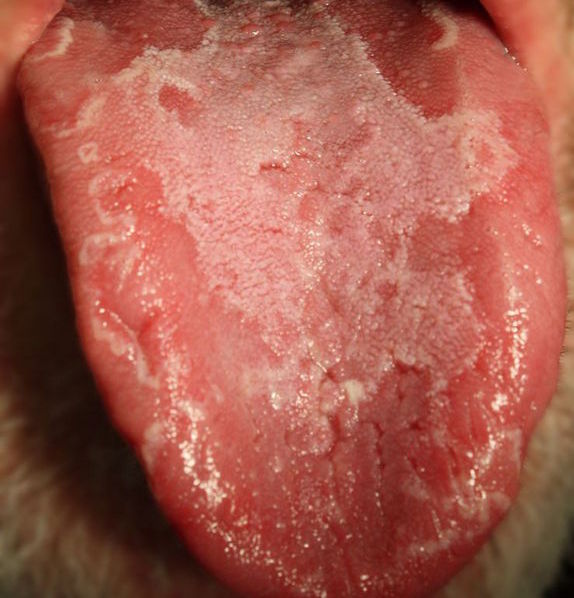Bizarre Condition Makes Tongue Resemble a Geographic Map
A mysterious condition that gives the tongue a mottled appearance that can sometimes resemble a map of the continents has long baffled scientists, but new research may offer some clues to its causes. Known as “geographic tongue,” the condition causes red, patchy shapes to appear on the tongue, formed as some areas lose the tiny reddish bumps called papillae that normally cover the tongue’s surface. The condition is harmless for the people who have it, but it is chronic, and affects about 2 percent of the population.
When this flame grows, it essentially destroys this layer, and continues until the whole forest is burned down, or the entire tongue is affected. Eventually, the tongue heals by itself, but since the disease is chronic, the process eventually repeats itself.
Gabriel Seiden, a physicist at the Weizmann Institute of Science in Israel describing “Geographic tongue” syndrome
Researchers in Israel have discovered that there are two forms of the condition, and that each form spreads differently over the tongue. The findings, described Wednesday (April 1) in the New Journal of Physics, could lead to practical tools for diagnosing the condition, the researchers say. Geographic tongue (GT) affects the tongue’s upper layer of tissue, call the epithelium. This layer includes the bumpy papillae, which contain the taste buds. In people with GT, one type of papillae called filiform papillae becomes inflamed, said study co-author Gabriel Seiden, a physicist at the Weizmann Institute of Science in Israel, who is currently based at the Max Planck Institute for the Physics of Complex Systems in German

Health